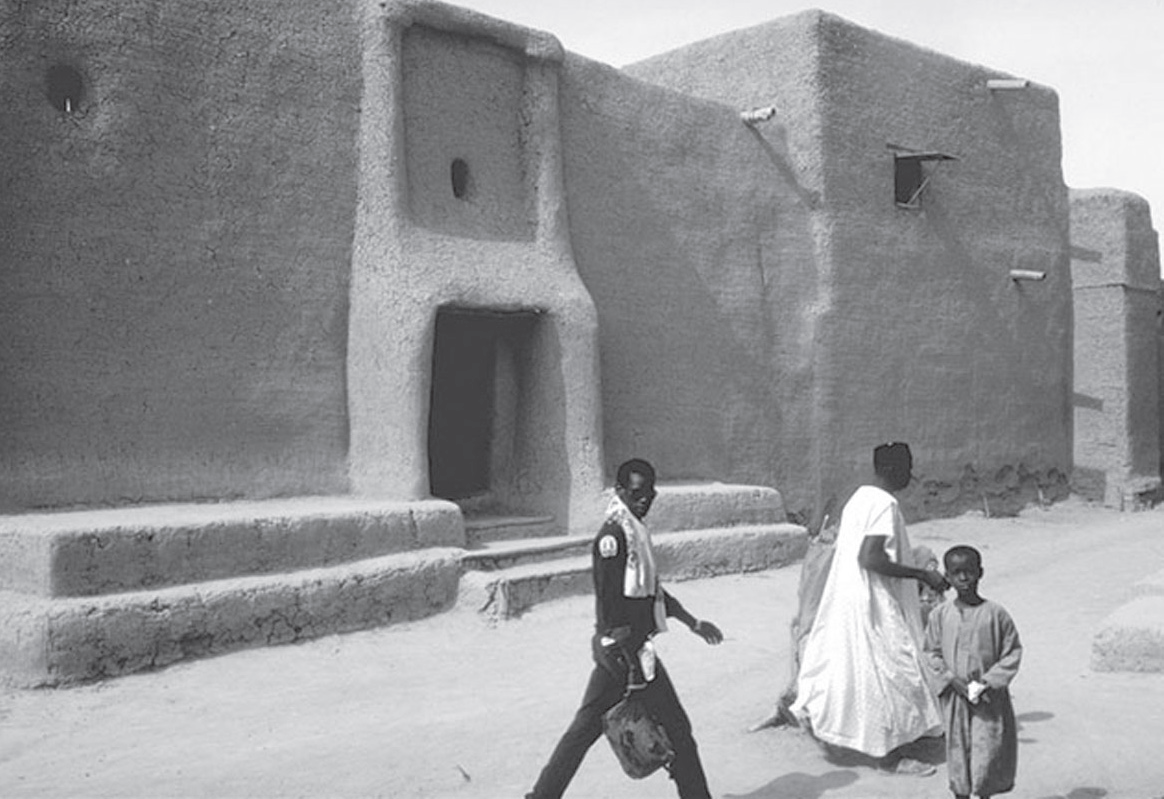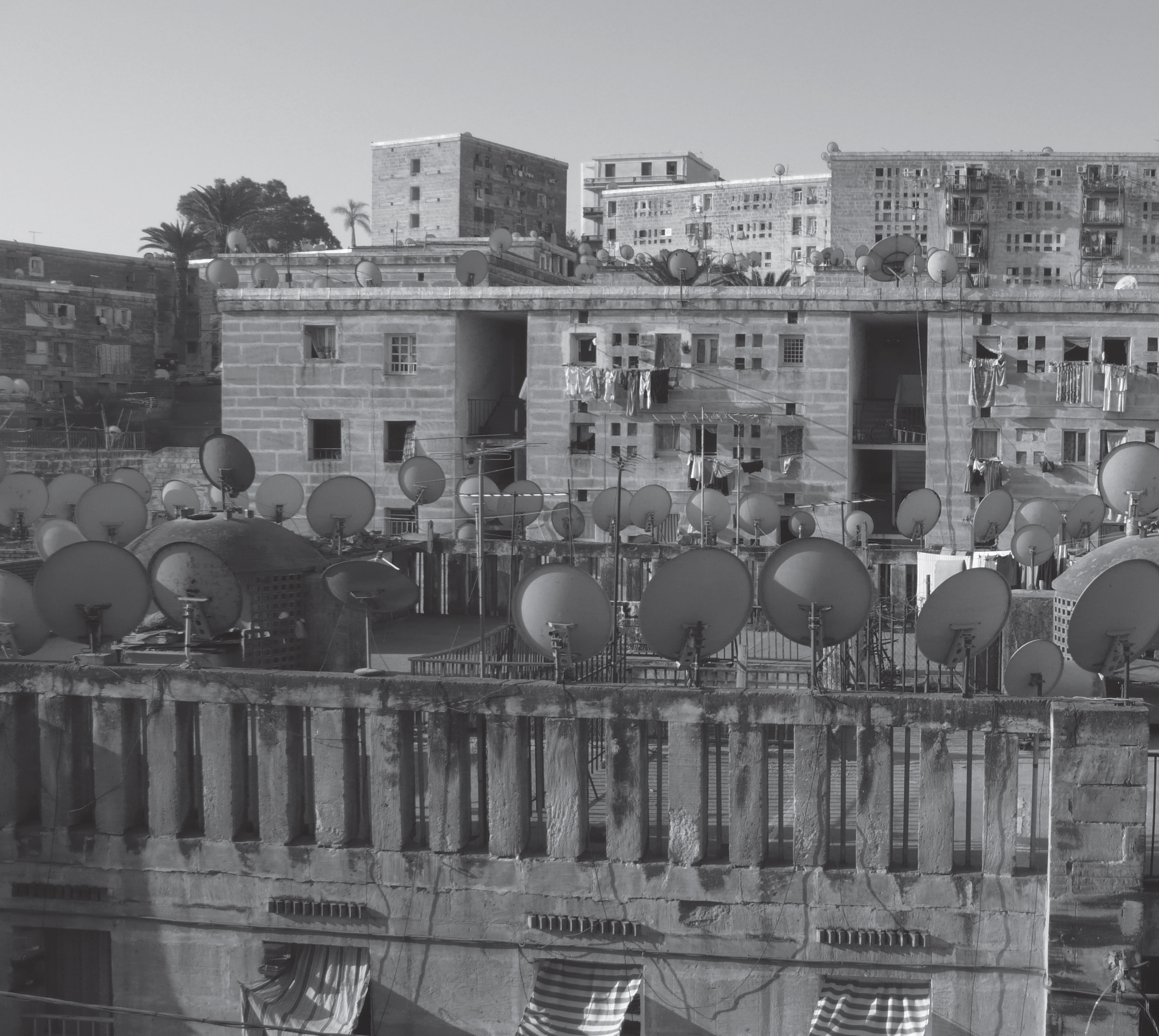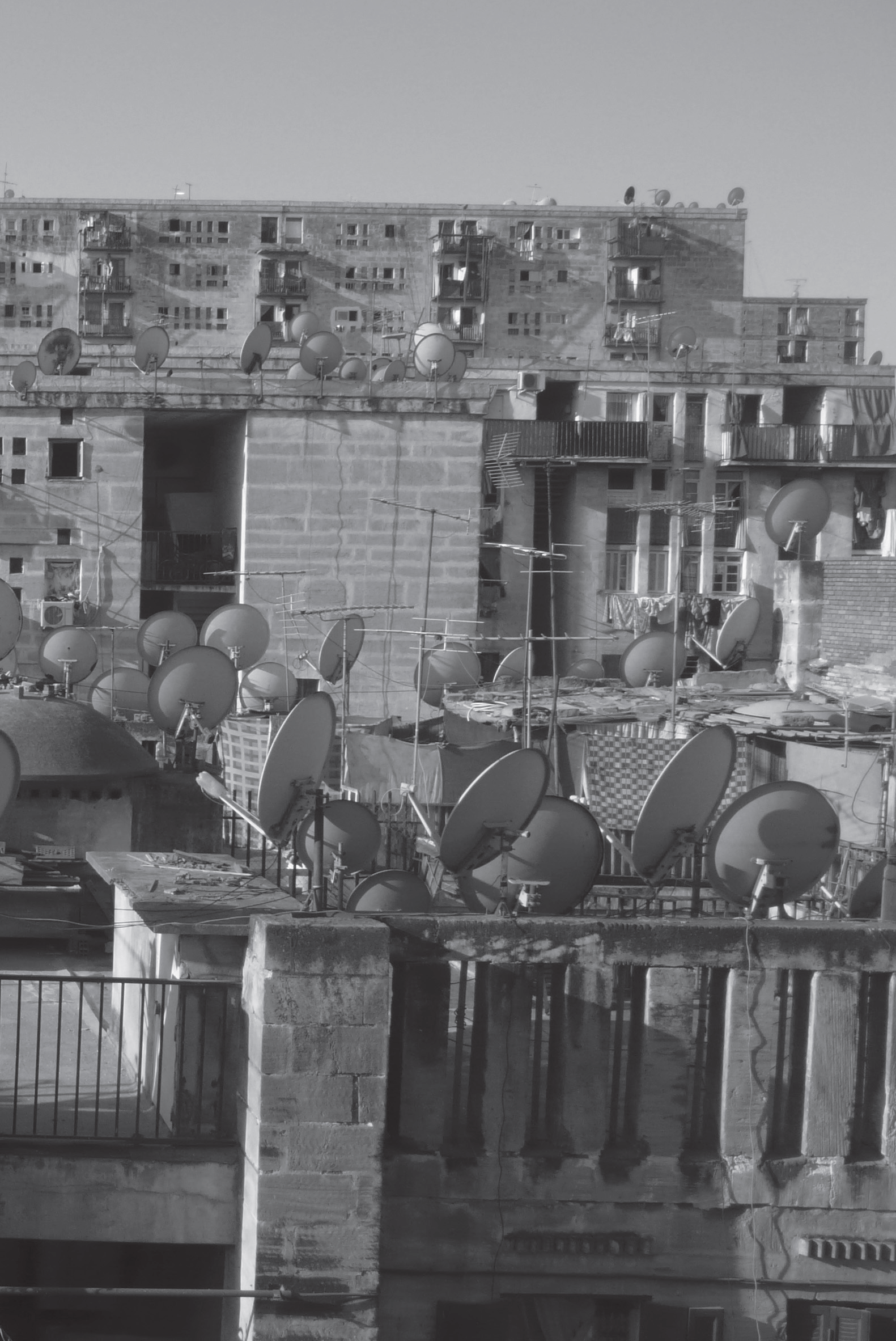Kader Attia
SITE Art project, 2008
Kader Attia
My project for SITE is halfway between a statement and an artwork. As always in my work, I talk about what I know and what I have lived in order to take an analytical look at my experiences. I continue, for several years, to develop a single thought—this reappropriation is an endless cultural process between human beings, because it is rooted in my cultural History. This History is the one that binds as much as it separates the Algerian mountains and the postmodernist concrete buildings of the banlieues.
Djenne, Mali
Reappropriation is an important notion for me, especially when talking about the postcolonialist modernist architectural theories that were first experimented with in Algeria, and then implemented in the French banlieues, before being spread all around the world. Several social modernist architectures created in Algeria by Fernand Pouillon, for example, prefigured the ones built on a massive scale during the 1960s and 1970s in France. There is something premonitory in the energy hurriedly expended before independence to complete these Algerian building sites. These projects, conceived about ten years before independence, seem to have been the laboratories of post-colonization social control via housing. They anticipate the massive constructions of the dormitory towns, intended to gather the streams of economic immigrants from the “future former colonies”: a cheap workforce, even easier to exploit than during the colonial period. Indeed, since they are no longer French, they are “not at home anymore”, and are thus less particular about their living conditions.
Chapelle Notre-Dame-du-Haut de Ronchamp, France
All the more so in France, where these people went from shanty towns—like Nanterre or Juvisy—to concrete blocks. It is an endless story, but in France no one talks about it. Everyone knows the extent to which Algeria is an “official taboo” in French History. This social architecture of “housing for all” is in fact an instrument of power. It is a tool to control the “natives”. By moving them from a rural environment, where they had spaces to exist and to rebel (as in the case of the first significant riots in Sétif in 1945), to a gridded urban environment, where, gathered in blocks and assimilated to an anonymous perimeter—to which they have to adapt (not the contrary)—they become easier to control because they become weaker.
By having them pass from “houses” to “housing”, modernism pretends to improve their lives, but in reality it makes them weak by dissolving their identity and any desire to exist as individuals, which is diluted in “la masse”. What I am talking about here is History‘s cynicism. In addition to the pictures of Pouillon’s buildings I have taken on both sides of the Mediterranean Sea, I have done research into what influenced them. Anyone that takes a closer look at Le Corbusier‘s life will soon see the importance of his trip in Algeria in the early 1930s, and particularly the shock he felt when discovering the Mzab architectures of Ghardaia in the middle of the Algerian desert. The principles of the Mzab houses strongly influenced his “Athens Charter”. Some elements of the rules of this charter—like the “terrace roof“ or the “free facade”—are indeed already present in these 11th century architectures.
Vernacular M’zab Architectur, city of Ghardaia, Algeria.
The big issue for me is to know whether, beyond these historical facts, the artists who work within the space between these perimeters of modernist culture—between their origins and the notion of “order rather than emotions”— interpret these influences, interrogate their time, and reappropriate their space. In several of my works, I seek to show the natural instinct of people to readapt to their environment. They appropriate it through found materials, which are not products of their culture but brought from the outside (corrugated steel, plastic cans and bags, etc.). This has always existed (for example, the strange heads which support some columns in the Istanbul cistern site or the objects in Africa that have been repaired with found material).
I speak of the necessity of reappropriation because I am thinking of the people who have been dispossessed by the Occidental mind. The Mzab aesthetic has been strongly dispossessed by the Genius of Le Corbusier and quickly readapted and spread through the world. Let’s remember that between 1933 and 1936, Le Corbusier met the Mexican architect Luis Barragán in Paris. He will be the purest reproducer of the first modernist houses in Latin America, exporting an aesthetic that is nine centuries old from the desert to the hacienda environment. In fact it follows the colonialist Spanish architecture culture in this country, which is strongly influenced by the designs of the Arabian-Andalusian houses, with the importance of the interior garden courtyard, with a fountain in the center of the patio surrounded by arcades.
A year ago I met an Arab philosopher who told me that Islam could not have been founded and developed outside of the desert; Islam is a religion of the desert. I think that coming from the desert, with a natural fascination with elements like Earth, Air, Fire, and Water, Muslims have invented a modern way of thinking in-between Asia and the Occident. But whereas the Occident has always seen them as Iconoclastic, they were actually practicing a modern language of visual art. As Edward Said used to say in his theses on Orientalism, the Occident has orientalized the Orient to synthesize and control it.
Cité Pouillon, 2008







